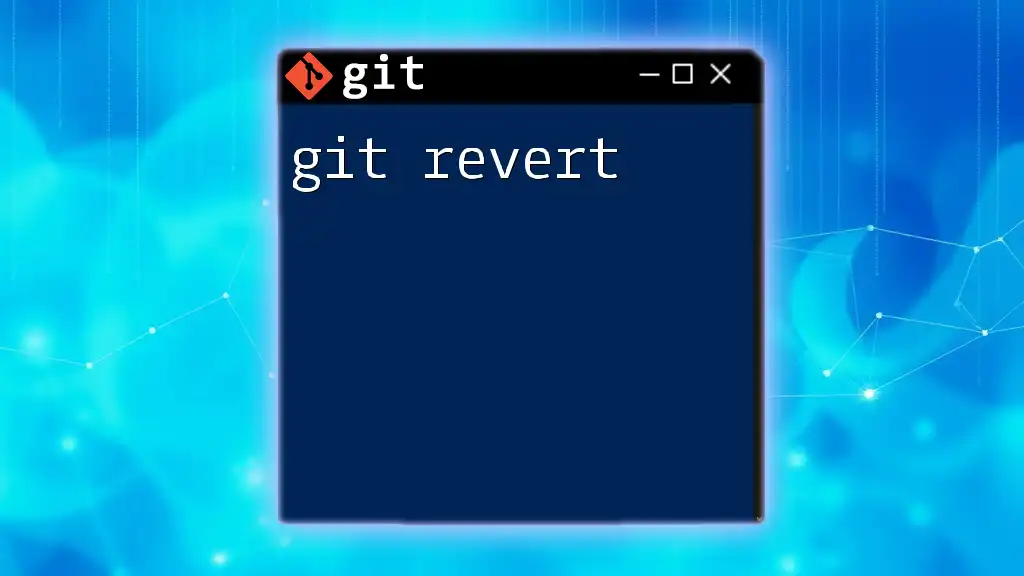The `.gitignore` file is used to specify which files or directories Git should ignore and not track in the repository.
# Example of a .gitignore file
*.log # Ignore all log files
node_modules/ # Ignore the node_modules directory
*.env # Ignore environment variable files
Understanding the `.gitignore` File
What is a `.gitignore` File?
The `.gitignore` file is an essential component of any Git repository. It tells Git which files or directories should be ignored and not tracked in version control. This helps maintain a clean codebase by preventing unnecessary files, such as logs, build artifacts, and sensitive information, from being committed to the repository. The `.gitignore` file typically resides in the root directory of your Git repository.
How does `.gitignore` Work?
When you run Git commands, it checks the `.gitignore` file to determine which files should be excluded from tracking. If a file matches a pattern in this file, Git will ignore it, meaning changes to that file will not show up when you run `git status` or during commits. This functionality is crucial for keeping your repository focused on source files that matter.
Common Use Cases for `.gitignore`
Ignoring Temporary Files
Many development environments and tools generate temporary files that are not necessary for version control. For instance, files like `.DS_Store` on macOS or `Thumbs.db` on Windows clutter your repository.
To ignore these files, you can add the following lines to your `.gitignore`:
# Ignore macOS and Windows temporary files
.DS_Store
Thumbs.db
By ignoring temporary files, you ensure that your repository is tidy and only contains files pertinent to your project’s source code.
Ignoring Build Artifacts
Build artifacts, such as binaries and compiled code, are often produced by your build process. These files can be large and should generally not be tracked by Git, as they can be re-generated from the source files.
For example, if your project generates build artifacts in a `dist/` directory, you can ignore it by adding this to your `.gitignore`:
# Ignore build artifacts
/dist/
/bin/
/obj/
This keeps your repository lightweight and focused on the development files.
Ignoring Sensitive Information
Including sensitive information, such as API keys or password files, in your repository can be a serious security risk. Files like `.env` or `secrets.json` should always be excluded from version control.
You can add the following line to your `.gitignore` file to prevent such files from being tracked:
# Ignore sensitive information
.env
secrets.json
By following this practice, you protect your project from unauthorized access and keep sensitive data secure.
Syntax of the `.gitignore` File
Basic Syntax Rules
The `.gitignore` file uses simple patterns to match file names and paths. Here are some key rules:
- Lines starting with `#` are treated as comments.
- Blank lines are ignored.
- A `/` at the start indicates that the pattern is relative to the repository root.
- An asterisk `*` is a wildcard that matches any number of characters.
- A `!` before a pattern negates the ignore rule, allowing you to track specific files even when their parent directory is ignored.
Examples of Syntax
-
Ignoring a specific file: To ignore a specific file named `secrets.json`, simply add this line:
secrets.json -
Ignoring all files in a directory: If you want to ignore all files within the `logs/` directory, use:
/logs/ -
Ignoring file types: To ignore all log files irrespective of their names, include:
*.log
These examples showcase the flexibility of the `.gitignore` syntax in controlling which files are excluded from tracking.
Best Practices for Creating a `.gitignore`
Keep It Simple
When crafting your `.gitignore`, strive for simplicity. Avoid overly complex patterns that could lead to confusion. Clearly defining what should be ignored helps maintain consistency across repositories and among collaborators.
Use an Existing Template
To save time and ensure comprehensive coverage, consider using existing `.gitignore` templates provided by platforms like GitHub. These templates are tailored for different programming languages and frameworks, providing a solid starting point.
Regular Maintenance
As your project evolves, remember to revisit and update your `.gitignore` file. New files or directories may have been created that warrant inclusion. Regular maintenance minimizes oversight and ensures that your repository remains clean.
Viewing and Updating `.gitignore`
Checking Current `.gitignore` Settings
To see what patterns are currently specified in your `.gitignore` file, you can simply execute:
cat .gitignore
This command displays the contents of the file, allowing you to verify and review its contents.
Updating `.gitignore`
If you need to add or remove patterns, simply open the `.gitignore` file in a text editor. After making changes, save the file. You can then use `git status` to check which files are currently being ignored or untracked by Git. This helps confirm that your updates worked as intended. For instance, after modifying `.gitignore`, you may see files listed as "untracked" if they are now excluded from version control:
git status
Conclusion
The `.gitignore` file is an essential tool in your Git workflow. By understanding what does git ignoredo, you can maintain a cleaner and more efficient code repository, ensuring that only relevant and necessary files are tracked. Adopting best practices in managing your `.gitignore` helps protect sensitive data and keeps your project organized.
Additional Resources
For more in-depth information, consider exploring the [official Git documentation on `.gitignore`](https://git-scm.com/docs/gitignore), where you can find additional patterns and examples. Engaging with community resources may also provide new insights into effective version control strategies.
Call to Action
For more tips and tricks on harnessing the power of Git, subscribe to our updates or join our workshop for hands-on training. Learn how to streamline your workflow and maximize your coding efficiency with expert guidance!








